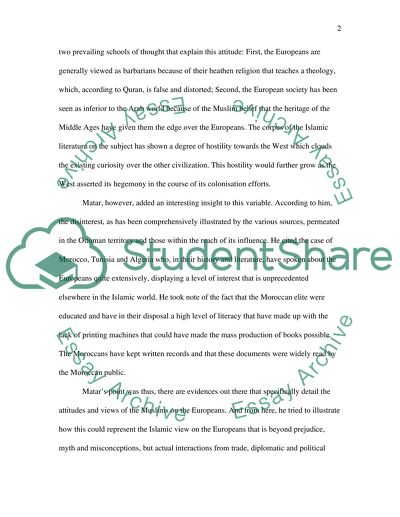Cite this document
(Arab Views of Europeans 1578-1727 Literature review Example | Topics and Well Written Essays - 1500 words, n.d.)
Arab Views of Europeans 1578-1727 Literature review Example | Topics and Well Written Essays - 1500 words. https://studentshare.org/history/1550780-arab-views-of-europeans-1578-1727
Arab Views of Europeans 1578-1727 Literature review Example | Topics and Well Written Essays - 1500 words. https://studentshare.org/history/1550780-arab-views-of-europeans-1578-1727
(Arab Views of Europeans 1578-1727 Literature Review Example | Topics and Well Written Essays - 1500 Words)
Arab Views of Europeans 1578-1727 Literature Review Example | Topics and Well Written Essays - 1500 Words. https://studentshare.org/history/1550780-arab-views-of-europeans-1578-1727.
Arab Views of Europeans 1578-1727 Literature Review Example | Topics and Well Written Essays - 1500 Words. https://studentshare.org/history/1550780-arab-views-of-europeans-1578-1727.
“Arab Views of Europeans 1578-1727 Literature Review Example | Topics and Well Written Essays - 1500 Words”. https://studentshare.org/history/1550780-arab-views-of-europeans-1578-1727.


